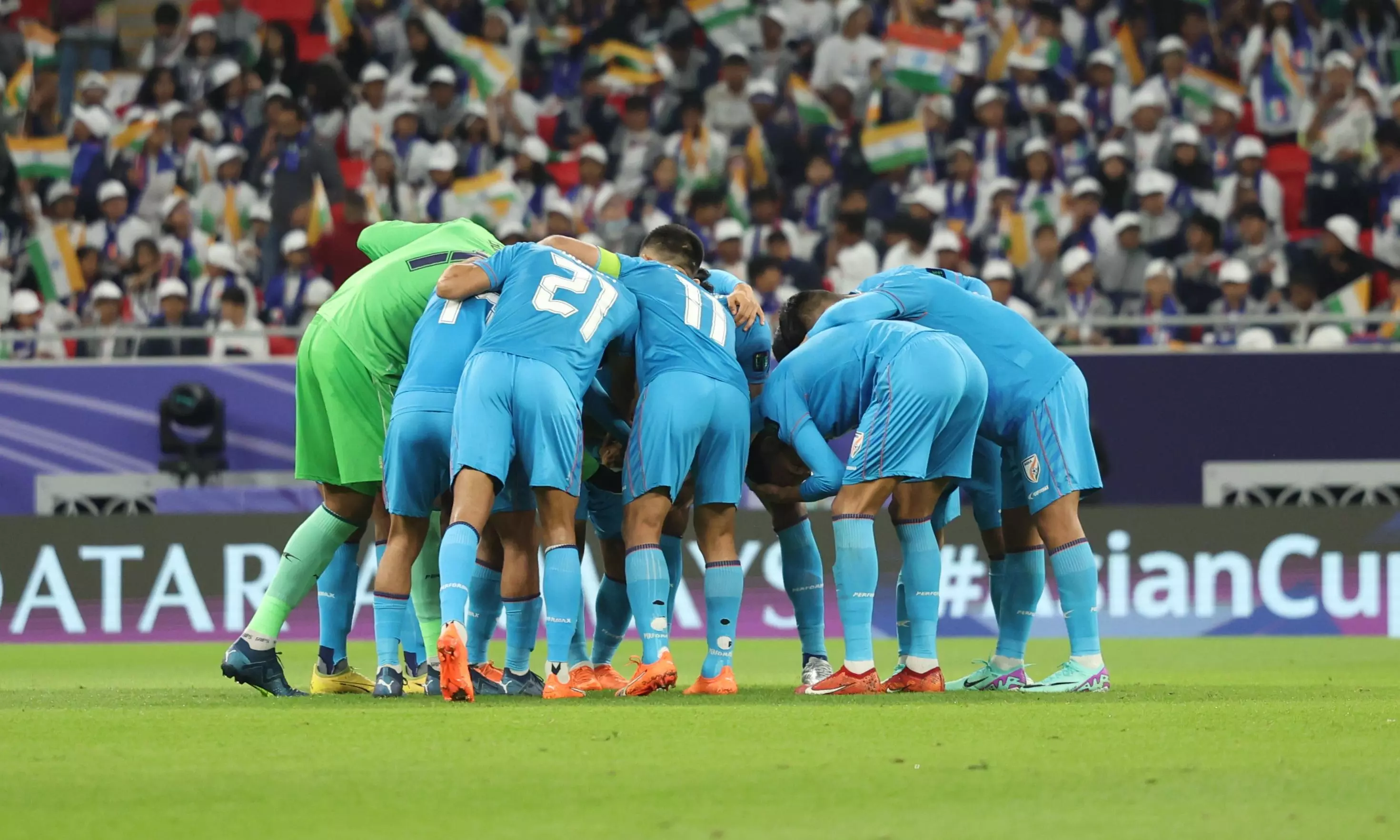Football
Everything is wrong with Indian football
Reflecting on the less glamorous aspects of the 'beautiful game' in India during the past season.

The interplay between sports and controversy is a longstanding phenomenon. As sports have become powerful tools for generating significant returns, individuals and organizations have sought to gain an edge by employing unconventional tactics, often at the expense of the integrity and development of the sport. Such actions typically result in a common outcome: the stagnation of the entire sporting ecosystem under their influence.
In India, cricket holds a dominant position as the most marketable and profitable sport, often overshadowing other events. Cricket's ability to achieve self-sustainability in India is unmatched. However, given the vast human resources available, there is a persistent expectation and demand for Indian teams to perform at exceptionally high levels across various sports. Football, universally known as the "world's sport," is a prime example.
The fact that India's premier football division failed to secure a title sponsor for its milestone 10th season underscores the business-related challenges and despondence within the ecosystem.
The challenges facing Indian football are neither minor nor recent; they are deep-rooted and pervasive issues that have hindered the sport's growth in the subcontinent for years. In 2006, FIFA officials referred to India as the "Sleeping Giant of World Football," but it begs the question: Are they truly asleep, or merely pretending, since one cannot wake someone who is feigning sleep?
The Top Divisions
If leagues and games are viewed as products, then spectators are the consumers. While they may not be direct stakeholders in the ecosystem, their right to demand quality remains paramount. Such demands for better quality are common among Indian football enthusiasts; the issue is not if these outcries will happen, but when and why they will occur.
Despite the calm demeanor of those in power within the governing bodies, it is the individuals at the grassroots level who bear the brunt of these challenges. From a business perspective, this leads to a gradual erosion of the market. Consistent regression, particularly when there is evident potential, results in lost opportunities and perpetuates the notion that realizing this potential is a distant, almost utopian dream.
The Indian Super League (ISL), the premier men's division in India's domestic football circuit, faces significant challenges, particularly in refereeing standards. Despite the league's intense rivalries and high-stakes games, which naturally generate fan hostility, the widespread love for the game and shared disappointment in officiating quality unite fans. Discussions about implementing VAR began years ago, but they have remained just that—talks.
Proposals for a cost-effective "VAR-lite" system were ultimately abandoned due to financial constraints, as stated by the then General Secretary of the All India Football Federation (AIFF).
It raises eyebrows that countries like Thailand, Vietnam, Indonesia, and even Bhutan have successfully integrated VAR systems into their domestic leagues, while India, a global tech leader, struggles to afford this now-standard sporting infrastructure. The discrepancy becomes stark when considering Bhutan's highly cost-effective VAR model.
Consider the 2023 incident involving Akash Mishra's controversial red card in the Mumbai vs. Mohun Bagan game, highlighting the inconsistency in refereeing. ISL 10 averaged nearly 20 fouls per game, 2.15 yellow cards, and 0.04 direct reds. Intriguingly, one referee issued 91 yellow cards in 16 games, averaging about 5 per game—well above the league's average.
Two other referees averaged around 6 yellow cards per game, despite overseeing fewer matches. This inconsistency in officiating styles can unduly influence the game, making referees central figures rather than impartial arbiters. While VAR may not solve all these issues, it could mitigate many erroneous decisions if properly implemented.
However, refereeing incompetence is just the visible tip of the iceberg. The deeper systemic issues become evident when examining the I-League, India's second-division men's football league. The I-League suffers from severe organizational deficiencies. Fixtures are scheduled without considering the logistical challenges clubs face in traveling across the world's seventh-largest country. Many matches went unbroadcasted, despite partnerships with online platforms like the AIFF YouTube channel and FanCode.
Allegations of delayed salary payments are widespread, and the incentive structure for employees is disheartening, often framed as "we are not the worst" rather than striving for excellence. The season's conclusion was marred by irony: Mohammedan SC, the I-League champions, celebrated their victory with a seemingly broken crown, symbolizing the bittersweet reality of Indian football—moments of triumph often end in disappointment.
The Unknown Depths
The absolute rock-bottom for any sport is when the integrity of the game is compromised, most notably through match-fixing. While financial struggles, poor results, and waning fan support are significant issues for a developing sport, they can be addressed and rectified over time. However, match-fixing strikes at the very core of the sport's spirit, undermining its credibility and authenticity.
A recent and stark example of this occurred in the Delhi Premier League, considered the fifth division in India's football pyramid. During a match between Ahbab FC and Rangers FC, Ahbab won 4-2, but the goals they conceded appeared so orchestrated that they seemed scripted to viewers. The blatant nature of these goals led to widespread suspicion and outcry. Consequently, Ahbab FC was suspended, highlighting how easily such malpractices can occur with minimal oversight.
This incident came to light due to the match being streamed live. Fans who noticed the irregularities spread the word on social media, forcing authorities to take action. While the exposure of this incident is a testament to the power of vigilant fans and digital platforms, it also underscores the vulnerability of the sport to corruption, even at lower levels.
The 'Root' rots
The essence of growth in any sport lies in its grassroots and youth development. Quality players emerge through well-structured youth programs, ultimately elevating the sport's stature. In India, initiatives such as children's leagues and the Reliance Foundation Development League (RFDL) have brought promising young talent to the forefront. However, the overall structure of youth football remains somewhat flawed. There are no established U17, U21, or U23 national teams providing consistent game time and training for the country's best youth players.
Instead, occasional friendlies are played with hastily assembled teams and coaches, which is not a sustainable approach for a governing body aiming for future World Cup qualifications. While the vision might be set for 2047 and the target for 2026, these structural issues need to be addressed by 2024.
Furthermore, the youth system is plagued by age-fraud, where overage players are inappropriately registered in younger categories for on-field success and other reasons. This practice deprives rightful young players of valuable game time, causing them to lose interest and feel that their efforts on the pitch are futile. Additionally, infrastructural issues and communication gaps reveal a lack of standards and transparency. For instance, during the RFDL National stages, Northeast United youth players were forced to use stadium stands and corridors as makeshift dressing rooms.
In the regional phase, U21 players were exposed to extreme afternoon heat due to poorly scheduled matches. Similar issues have plagued the senior women's national championship, with players enduring strenuous schedules without basic necessities like timely meals.
The challenges extend to coaches as well. Coach education and development lag behind, and those committed to nurturing young talent are further demotivated by pervasive "under the table" activities. Allegations of favoritism in licensing sessions and inequality in the procedure are common, further hindering the development of competent coaching staff.
At the center of this complex web of issues is the governing body of football in India, which is often the focal point of criticism and controversy. However, addressing the specifics of its shortcomings is a topic deserving of detailed analysis on its own.

